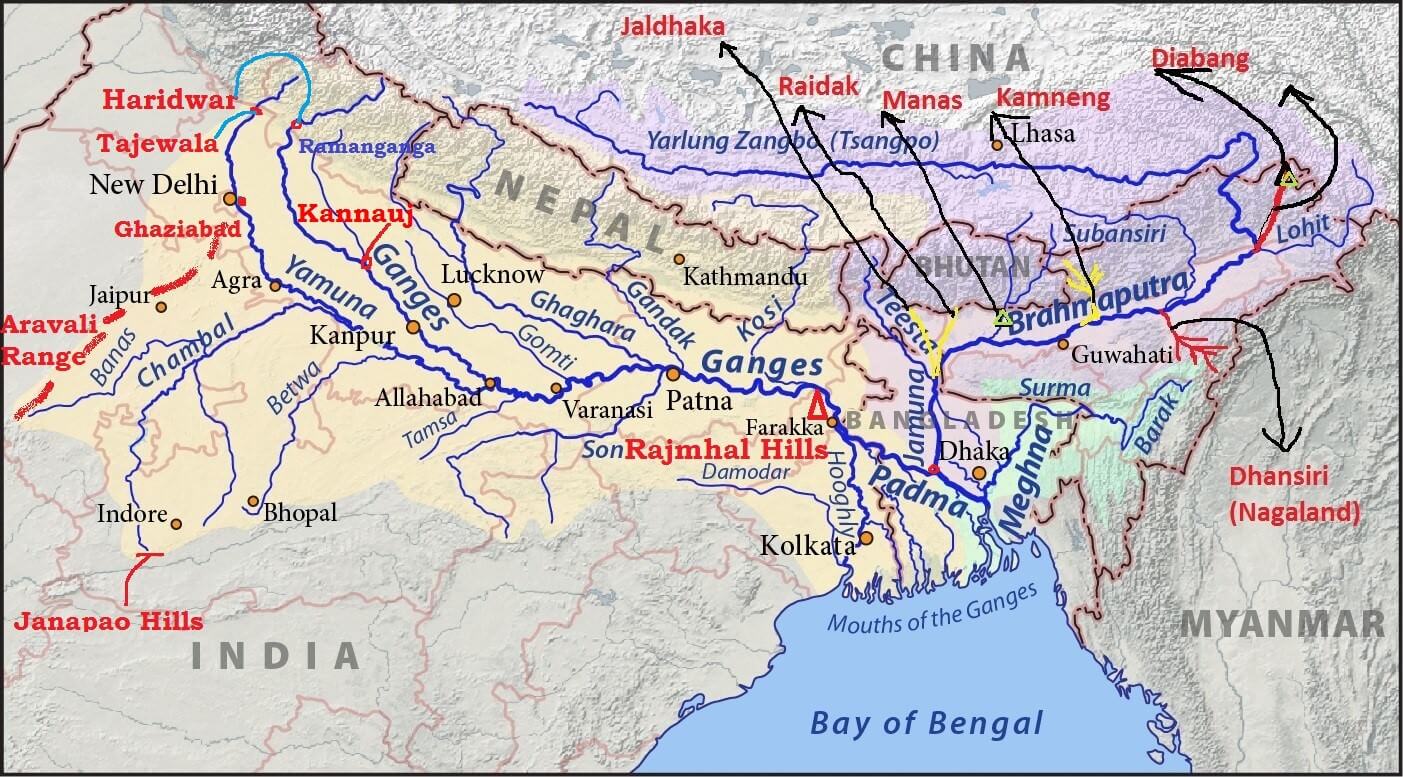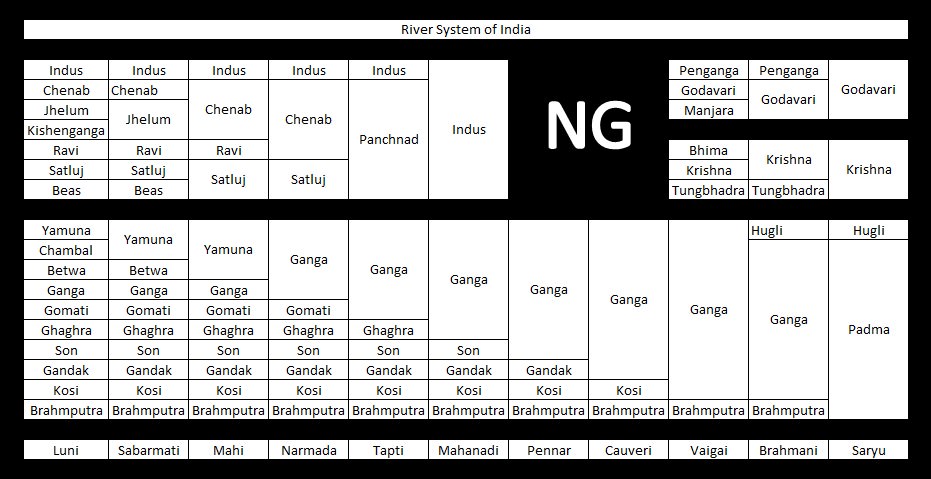East Flowing Peninsular Rivers: Godavari, Krishna & Mahanadi
Table of Contents
East Flowing Peninsular Rivers
- Mahanadi River
- Godavari River
- Krishna River
- Kaveri (Cauvery) River
- Pennar River
- Subarnarekha River
- Brahamani River
- Sarada River
- Ponnaiyar River
- Vaigai River
Mahanadi River
- The Mahanadi basin extends over states of Chhattisgarh and Odisha and comparatively smaller portions of Jharkhand, Maharashtra and Madhya Pradesh, draining an area of 1.4 lakh Sq.km.
- It is bounded by the Central India hills on the north, by the Eastern Ghats on the south and east and by the Maikala range on the west.
- The Mahanadi (“Great River”) follows a total course of 560 miles (900 km).
- It has its source in the northern foothills of Dandakaranya in Raipur District of Chhattisgarh at an elevation of 442 m.
- The Mahanadi is one of the major rivers of the peninsular rivers, in water potential and flood producing capacity, it ranks second to the Godavari.
- Other small streams between the Mahanadi and the Rushikulya draining directly into the Chilka Lake also forms the part of the basin.
- The major part of basin is covered with agricultural land accounting to 54.27% of the total area.
- It is one of the most-active silt-depositing streams in the Indian subcontinent.
- After receiving the Seonath River, it turns east and enters Odisha state.
- At Sambalpur the Hirakud Dam (one of the largest dams in India) on the river has formed a man-made lake 35 miles (55 km) long.
- It enters the Odisha plains near Cuttack and enters the Bay of Bengal at False Point by several channels.
- Puri, at one of its mouths, is a famous pilgrimage site.
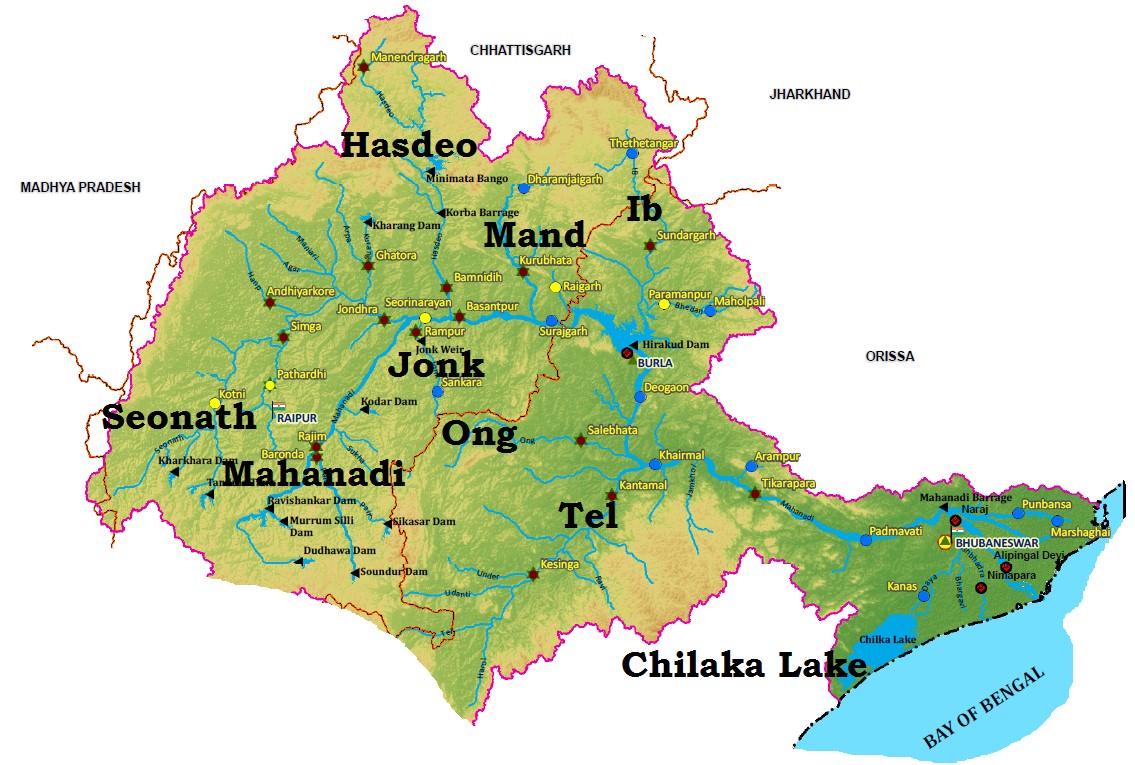
Tributaries of Mahanadi River
- Its upper course lies in the saucer-shaped basin called the ‘Chhattisgarh Plain’.
- This basin is surrounded by hills on the north, west and south as a result of which a large number of tributaries join the main river from these sides.
- Left bank Tributaries: The Seonath, the Hasdeo, the Mand and the Ib.
- Right bank Tributaries: The Ong, the Tel and the Jonk.
Projects on Mahanadi River
- Two important projects completed during pre-plan period in the basin are the Mahanadi main canal and Tandula reservoir in Chhattisgarh.
- During the plan period, the Hirakud dam, Mahanadi delta project, Hasdeo Bango, Mahanadi Reservoir Project were completed.
Industry in Mahanadi River Basin
- Three important urban centes in the basin are Raipur, Durg and Cuttack.
- Mahanadi basin, because of its rich mineral resource and adequate power resource, has a favorable industrial climate.
- The Important industries presently existing in the basin are the Iron and Steel plant at Bhilai, aluminium factories at Hirakud and Korba, paper mill near Cuttack and cement factory at Sundargarh.
- Other industries based primarily on agricultural produce are sugar and textile mills.
- Mining of coal, iron and manganese are other industrial activities.
Floods in Mahanadi River Basin
- The basin is subject to severe flooding occasionally in the delta area due to inadequate carrying capacity of the channels.
- The multi-purpose Hirakud dam provides some amount of flood relief by storing part of flood water.
- However, the problem still persists and a lasting solution need to be evolved.
Godavari River
- The Godavari is the largest river system of the Peninsular India and is revered as Dakshina Ganga.
- The Godavari basin extends over states of Maharashtra, Andhra Pradesh, Chhattisgarh and Odisha in addition to smaller parts in Madhya Pradesh, Karnataka and Union territory of Puducherry (Yanam) having a total area of ~ 3 lakh Sq.km.
- The basin is bounded by Satmala hills, the Ajanta range and the Mahadeo hills on the north, by the Eastern Ghats on the south and the east and by the Western Ghats on the west.
- The Godavari River rises from Trimbakeshwar in the Nashik district of Maharashtra about 80 km from the Arabian Sea at an elevation of 1,067 m.
- The total length of Godavari from its origin to outfall into the Bay of Bengal is 1,465 km.
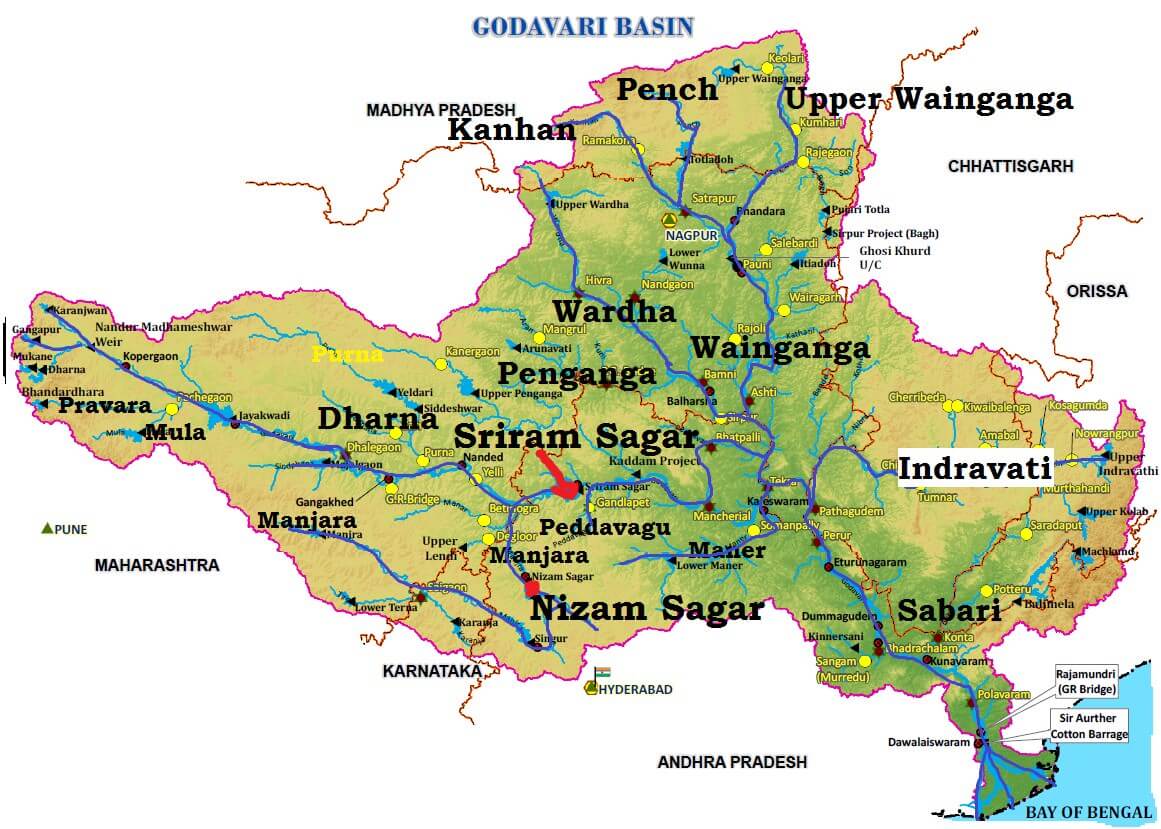
Tributaries of Godavari River
- The left bank tributaries are more in number and larger in size than the right bank tributaries.
- The Manjra (724 km) is the only important right bank tributary. It joins the Godavari after passing through the Nizam Sagar.
- Left Bank Tributaries: Dharna, Penganga, Wainganga, Wardha, Pranahita [conveying the combined waters of Penganga, the Wardha and Wainganga], Pench, Kanhan, Sabari, Indravati etc.
- Right Bank Tributaries: Pravara, Mula, Manjra, Peddavagu, Maner etc.
- Below Rajahmundry, the river divides itself into two main streams, the Gautami Godavari on the east and the Vashishta Godavari on the west and forms a large delta before it pours into the Bay of Bengal.
- The delta of the Godavari is of lobate type with a round bulge and many distributaries.
Mineral Resources in Godavari Basin
- The upper reaches of the Godavari drainage basin are occupied by the Deccan Traps containing minerals like magnetite, epidote, biotite, zircon, chlorite etc (metallic minerals)..
- The middle part of the basin is principally composed of phyllites, quartzites, amphiboles and granites (rocks).
- The downstream part of the middle basin is occupied mainly by sediments and rocks of the Gondwana group.
- The Gondwanas are principally detritals (waste or debris, in particular organic matter produced by decomposition or loose matter produced by erosion) with some thick coal seams. [Singareni Coal Seam]
- The Eastern Ghats dominate the lower part of the drainage basin and are formed mainly from the Khondalites.
Projects on Godavari River
- Important projects completed duing the plan period are Srirama Sagar, Godavari barrage, Upper Penganga, Jaikwadi, Upper Wainganga, Upper Indravati, Upper Wardha.
- Among the on-going projects, the prominent ones are Prnahita-Chevala and Polavaram.
Industry in Godavari Basin
- The major urban Centers in the basin are Nagpur, Aurangabad, Nashik, Rajhmundry.
- Nashik and Aurangabad have large number of industries especially automobile.
- Other than this, the industries in the basin are mostly based on agricultural produce such as rice milling, cotton spinning and weaving, sugar and oil extraction.
- Cement and some small engineering industries also exist in the basin.
Floods and Droughts in Godavari Basin
- Godavari basin faces flooding problem in its lower reaches.
- The coastal areas are cyclone-prone.
- The delta areas face drainage congestion due to flat topography.
- A large portion of Maharashtra falling (Marathwada) in the basin is drought prone.
Krishna River
- The Krishna is the second largest east flowing river of the Peninsula.
- The Krishna Basin extends over Andhra Pradesh, Maharashtra and Karnataka having a total area of ~2.6 lakh Sq.km.
- It is bounded by Balaghat range on the north, by the Eastern Ghats on the south and the east and by the Western Ghats on the west.
- The Krishna River rises from the Western Ghats near Jor village of Satara district of Maharashtra at an altitude of 1,337 m just north of Mahabaleshwar.
- The total length of river from origin to its outfall into the Bay of Bengal is 1,400 km.
- The major part of basin is covered with agricultural land accounting to 75.86% of the total area.
- The Krishna forms a large delta with a shoreline of about 120 km. The Krishna delta appears to merge with that formed by the Godavari and extends about 35 km into the sea.
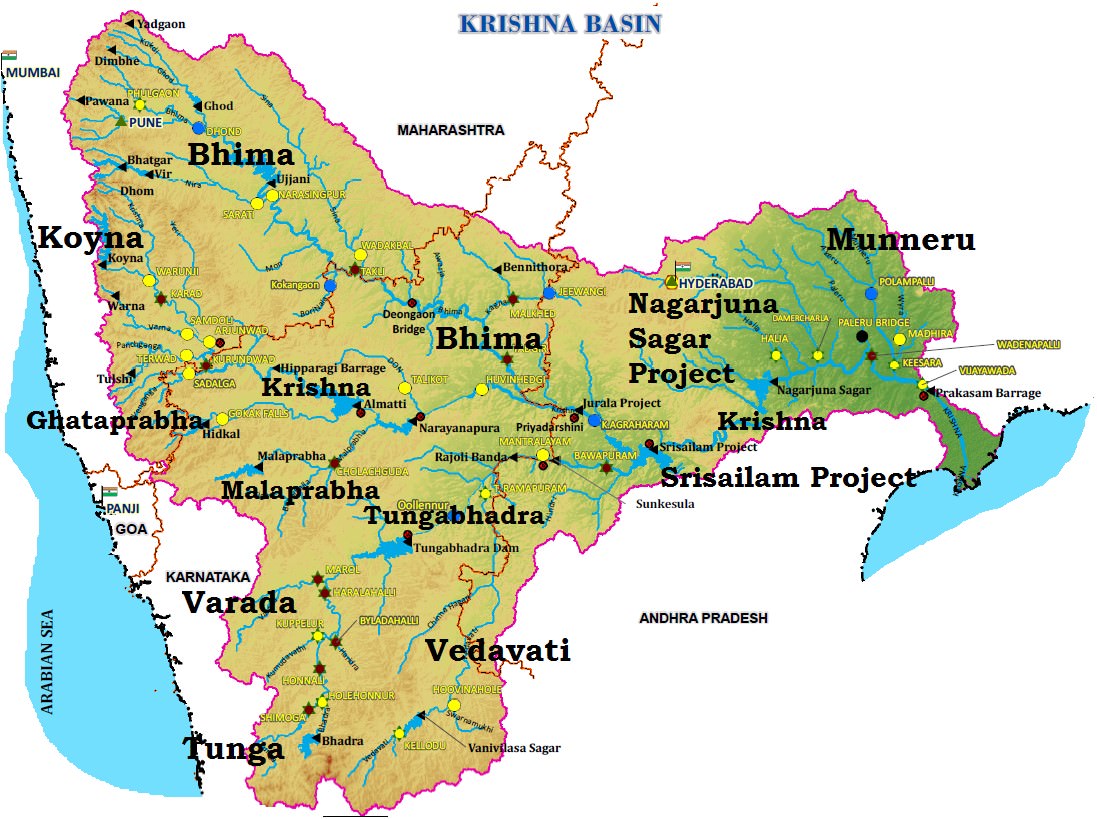
Tributaries of Krishna River
- Right bank: the Ghatprabha, the Malprabha and the Tungabhadra.
- Left Bank: the Bhima, the Musi and the Munneru.
- The Koyna is a small tributary but is known for Koyna Dam. This dam was perhaps the main cause of the devastating earthquake (6.4 on richter scale) in 1967 that killed 150 people.
- The Bhima originates from the Matheron Hills and joins the Krishna near Raichur after for a distance of 861 km.
- The Tungabhadra is formed by the unification of the Tunga and the Bhadra originating from Gangamula in the Central Sahyadri. Its total length is 531 km.
- At Wazirabad, it receives its last important tributary, the Musi, on whose banks the city of Hyderabad is located.
Projects on Krishna River
- Important ones are the Tungabhadra, Ghataprabha, Nagarjunasagar, Malaprabha, Bhima, Bhadra and Telugu Ganga.
- The major Hydro Power stations in the basin are Koyna, Tungabhadara, Sri Sailam, Nagarjuna Sagar, Almatti, Naryanpur, Bhadra.
- Tunagabhadra is a major inter-States project in the basin. In order to operate the project and to regulate the flows among the beneficiary States of Karnataka and Andhara Pradesh.
Resources in Krishna Basin
- The basin has rich mineral deposits and there is good potential for industrial development.
- Iron and steel, cement, sugar cane vegetable oil extraction and rice milling are important industrial activities at present in the basin.
- Recently oil has been struck in this basin which is bound to have an effect on the future industrial scenario of this basin.
Industry in Krishna Basin
- The major Urban Centers in the Basin are Pune, Hyderabad.
- Hyderabad is the state capital of Telangana and is now a major IT hub.
- Pune in Maharashtra has number of automobile and IT industry and is major education centre.
Drought and Floods in Krishna Basin
- Some parts of the basin, especially the Rayalaseema area of Andhra Pradesh, Bellary, Raichur, Dharwar, Chitradurga, Belgaum and Bijapur districts of Karnataka and Pune, Sholapur, Osmanabad and Ahmedanagar districts of Maharashtra are drought-prone.
- The delta area of the basin is subject to flooding. It has been observed that the river bed in delta area is continuously raised due to silt deposition resulting in reduction in carrying capacity of the channel.
- The coastal cyclonic rainfall of high intensity and short duration makes the flood problem worse
.
